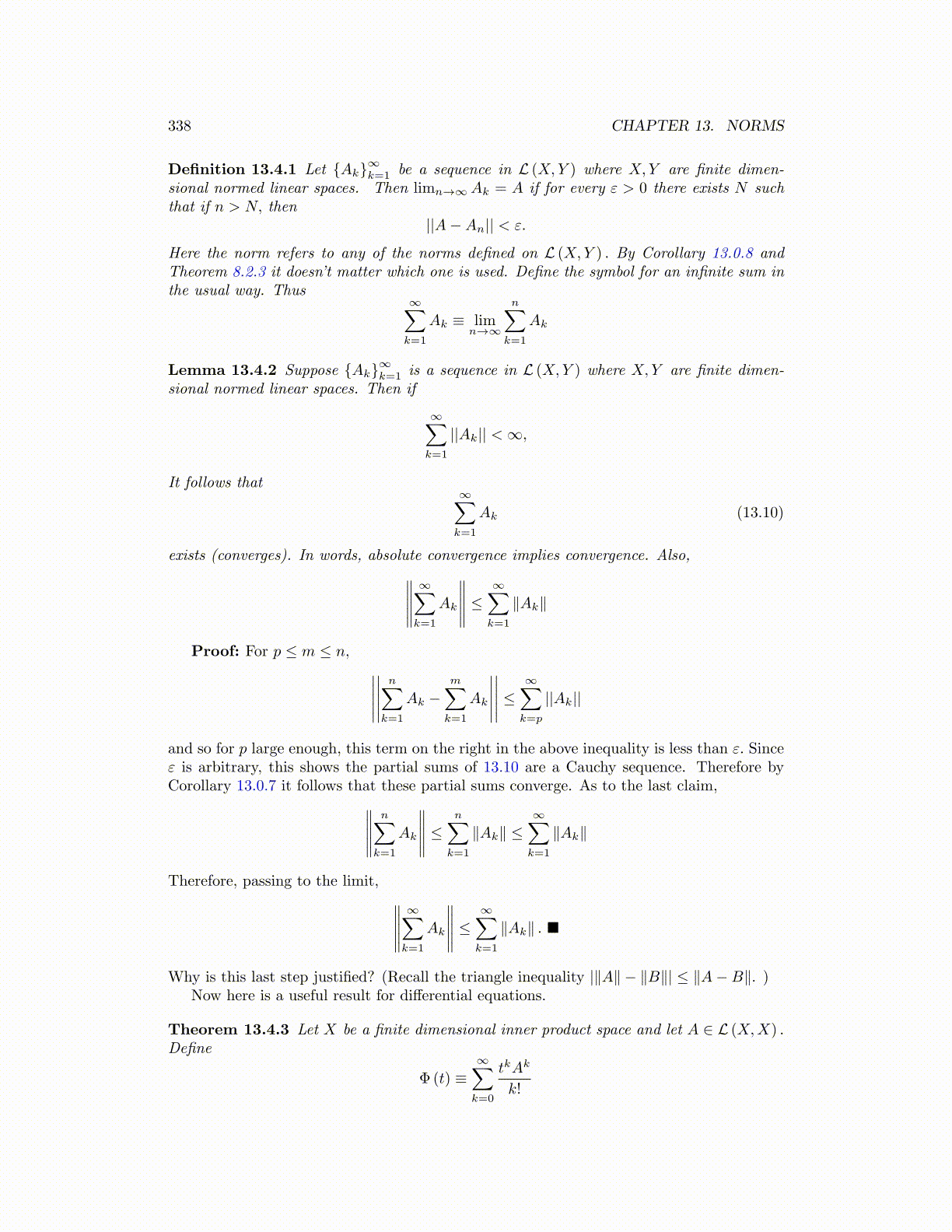
338 CHAPTER 13. NORMS
Definition 13.4.1 Let {Ak}∞k=1 be a sequence in L (X,Y ) where X,Y are finite dimen-sional normed linear spaces. Then limn→∞Ak = A if for every ε > 0 there exists N suchthat if n > N, then
||A−An|| < ε.
Here the norm refers to any of the norms defined on L (X,Y ) . By Corollary 13.0.8 andTheorem 8.2.3 it doesn’t matter which one is used. Define the symbol for an infinite sum inthe usual way. Thus
∞∑k=1
Ak ≡ limn→∞
n∑k=1
Ak
Lemma 13.4.2 Suppose {Ak}∞k=1 is a sequence in L (X,Y ) where X,Y are finite dimen-sional normed linear spaces. Then if
∞∑k=1
||Ak|| <∞,
It follows that∞∑k=1
Ak (13.10)
exists (converges). In words, absolute convergence implies convergence. Also,∥∥∥∥∥∞∑k=1
Ak
∥∥∥∥∥ ≤∞∑k=1
∥Ak∥
Proof: For p ≤ m ≤ n, ∣∣∣∣∣∣∣∣∣∣
n∑k=1
Ak −m∑
k=1
Ak
∣∣∣∣∣∣∣∣∣∣ ≤
∞∑k=p
||Ak||
and so for p large enough, this term on the right in the above inequality is less than ε. Sinceε is arbitrary, this shows the partial sums of 13.10 are a Cauchy sequence. Therefore byCorollary 13.0.7 it follows that these partial sums converge. As to the last claim,∥∥∥∥∥
n∑k=1
Ak
∥∥∥∥∥ ≤n∑
k=1
∥Ak∥ ≤∞∑k=1
∥Ak∥
Therefore, passing to the limit, ∥∥∥∥∥∞∑k=1
Ak
∥∥∥∥∥ ≤∞∑k=1
∥Ak∥ . ■
Why is this last step justified? (Recall the triangle inequality |∥A∥ − ∥B∥| ≤ ∥A−B∥. )Now here is a useful result for differential equations.
Theorem 13.4.3 Let X be a finite dimensional inner product space and let A ∈ L (X,X) .Define
Φ (t) ≡∞∑k=0
tkAk
k!